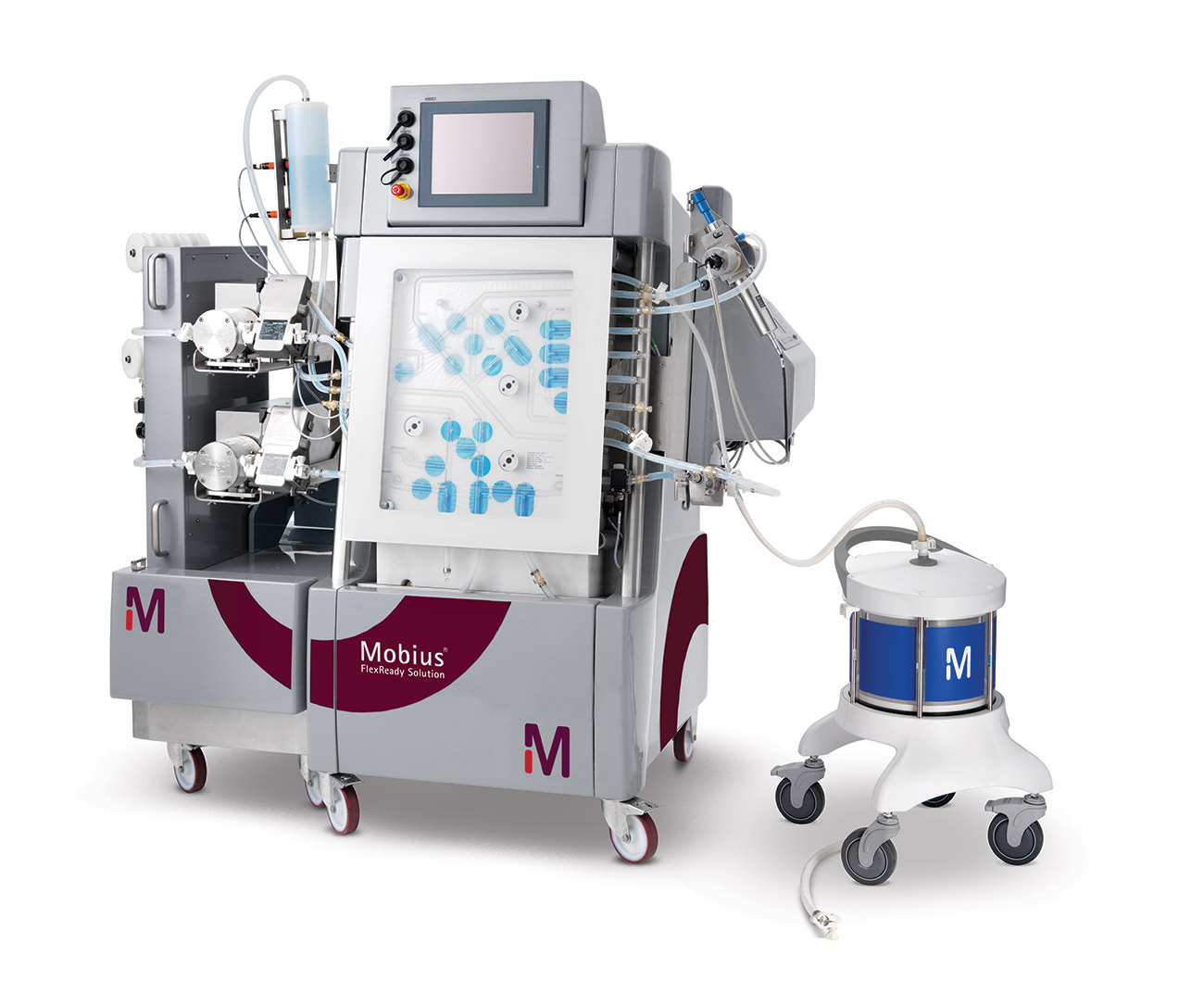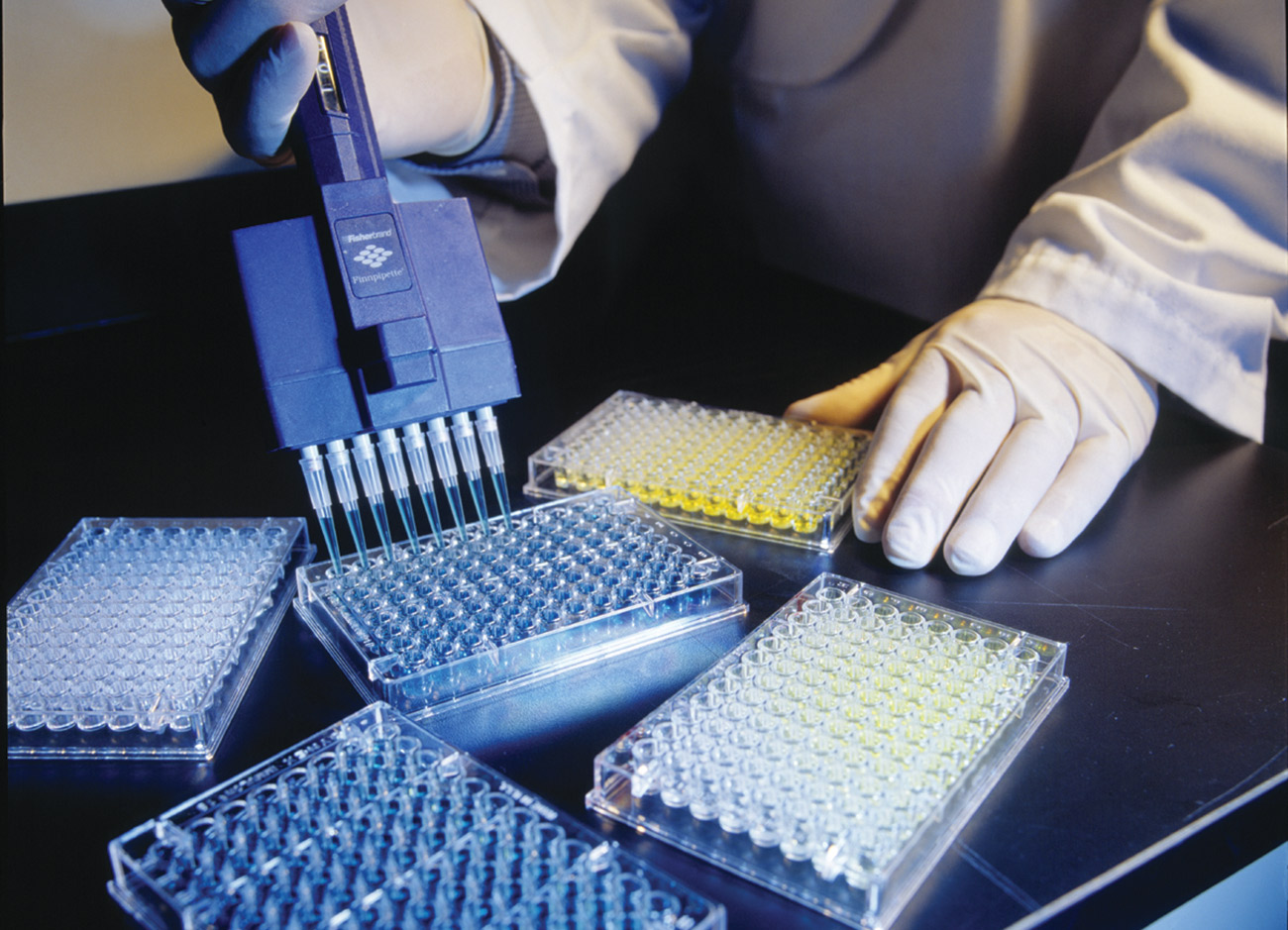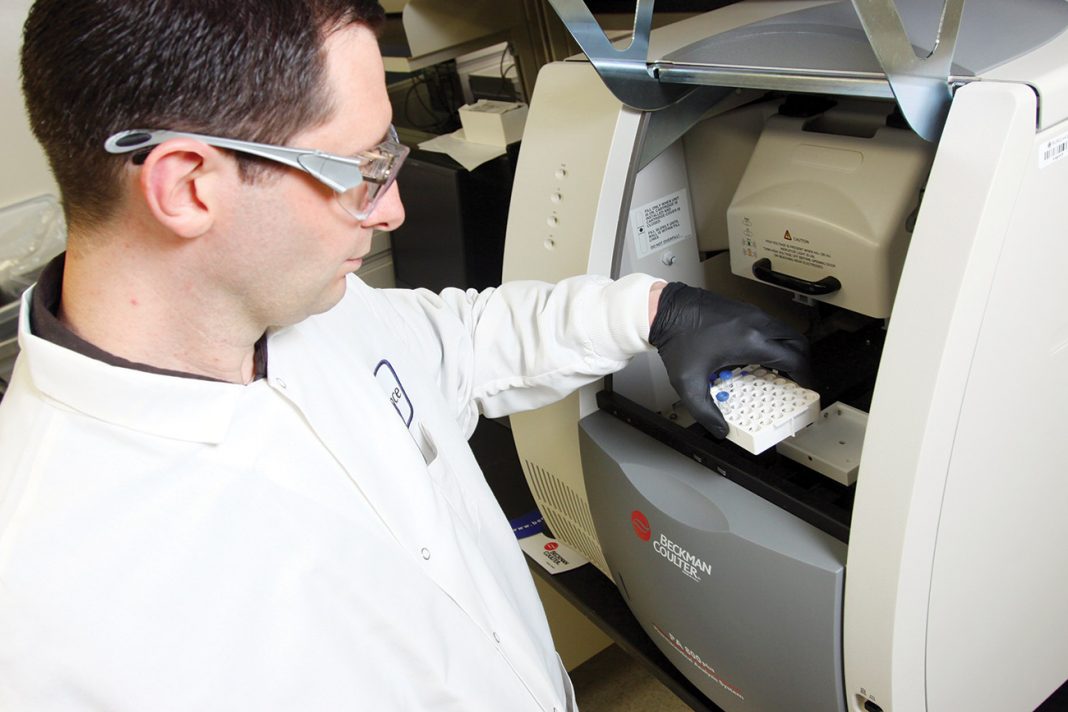Viral contamination can result in lost product batches, equipment sterilization costs, and facility shutdowns, costing biotherapeutic manufacturers millions of dollars. Even more importantly, undetected contamination can compromise patient safety and trust.
In 2009, the discovery of Vesivirus contamination forced a biopharmaceutical manufacturer to shut down a manufacturing facility, which caused a severe shortage of expensive, single-supplier enzyme-replacement therapies used to treat rare genetic diseases. The incident highlighted the importance of having a strong system in place to mitigate the risk of viral contamination, as well as a contingency plan in the unfortunate case that contamination does occur.
In contrast to chemically derived, small-molecule drugs, biologics are generally produced in animal or human cell lines, which carry the risk of virus contamination. While cell culture media and supplements for monoclonal antibody (mAb) production are often chemically defined, the same is not true for vaccines and cell- and gene-therapy products, which generally rely on some animal-derived materials for their production. While a trend toward animal-origin-free materials has begun, it’s not always easy or possible to implement, and the use of animal- or human-derived materials significantly increases the risk of adventitious viral contamination.
To reduce this risk, manufacturers rely on three fundamental pillars to support their viral safety strategies: preventing virus entry by careful source-material selection, detection of viral contaminants by multistage testing, and virus removal by multiple operations in downstream purification. This three-tiered strategy provides a solid foundation for viral safety in the production of recombinant protein and mAb therapies, but the one-size-fits-most manufacturing strategies used for protein production often don’t work well for non-protein biologics like viral vaccines, cell therapies, and gene therapies delivered via recombinant viruses.
Alternate Approaches for Non-mAb Therapies
The diverse characteristics of these novel therapies make them incompatible with the majority of technologies currently used to inactivate and remove viral contaminants during downstream purification, thus eliminating one of the three pillars that form the foundation of viral safety in mAb manufacturing. For example, the large size of cell therapies makes nanofiltration and other downstream, size-based separation techniques used to remove virus from protein-based therapies impractical. Gene therapies that use recombinant viruses (also known as viral vectors) to deliver DNA into cells face a similar challenge, since the absence of a sufficient size difference between adventitious and therapeutic virus may also prohibit the use of size-based filtration technologies. Downstream methods traditionally used to inactivate viruses, such as low-pH incubation and gamma- or UV-irradiation treatment, also leave manufacturers without many viable options. Sensitive cell therapies cannot withstand these harsh conditions, and anything that would disrupt a contaminating virus would also likely inactivate vaccines or gene therapies whose effectiveness depends on virus activity.
Although the underlying cause of viral contamination is not identified in the clear majority of occurrences, a few reports have suspected raw materials, such as serum, medium, and trypsin. Since manufacturers often cannot apply virus inactivation and removal systems to the downstream purification of therapies, they are moving to implement treatments for source materials before they enter the manufacturing train. Treatment of media with high temperature short time (HTST) or irradiation with gamma or UV can help reduce virus levels in some components, but not all supplements are compatible with these treatment methods and the equipment can be expensive to install and validate. Newer developments include specially designed filters for quickly and easily processing cell culture media and upstream supplements as well as increased focus on single-use technologies to minimize the likelihood of virus entry from operators or the environment.

Novel Filters and Chromatography Media
Many of the downstream virus, clearance technologies simply weren’t designed for upstream use, making their performance in upstream applications less than optimal. Viral clearance filters, for example, “Are mostly designed for downstream purification of protein-based therapeutics,” commented Priyabrata Pattnaik, Ph.D., head of biologics operations, Asia Pacific, MilliporeSigma. Dr. Pattnaik also mentioned that the R&D team at MilliporeSigma has developed a novel filter specifically designed to handle complex cell culture media.
“[The team] optimized the membrane chemistry and design configuration to adapt the product to deal with media filtration where it can offer high-throughput volumes so that it’s economically feasible to implement,” he explained.
Merck KGaA, Darmstadt, Germany has also partnered with the DiViNe consortium to develop an affinity chromatography resin for downstream vaccine purification. The DiViNe project, which received funding from the European Union’s Horizon 2020 research and innovation program, aims to improve yields, decrease costs, and reduce the environmental impact of vaccine production by employing an affinity-based strategy, similar to the use of Protein A in mAb production. The chromatography resin uses Nanofitin® ligands, with tailored affinities, to capture and elute viral- vaccine products. Affinity chromatography can provide an option for selective removal of adventitious viral agents from vaccine processes.
While current ion-exchange chromatography methods typically work for viral-vaccine and viral-vector purification, Dr. Pattnaik contended that they generally exhibit low capacity and poor selectivity.
Tailoring virus-reduction technologies to better fit the needs of both upstream and downstream processes of vaccine, and cell- and gene-therapy production exemplifies some of the ways in which manufacturers have adapted their processes to ensure viral safety in these novel classes of biologics.
Viral Safety Pillars
While individual cell and viral therapeutics may be amenable to some virus inactivation and removal methods, “By and large you’ve lost one of your [viral safety] pillars,” remarked Martha Rook, Ph.D., head of gene editing, novel modalities, MilliporeSigma. “There’s a much bigger focus on the selection of your source material, on the testing of the product in various stages of manufacturing, as well as, now, the processing conditions themselves.”
In addition to placing a greater emphasis on qualifying raw materials and their suppliers, the movement to adopt closed, single-use systems throughout the manufacturing train, from 2,000 L bioreactors to prepacked chromatography columns, has gained traction. Ensuring a closed, aseptic manufacturing process that does not introduce adventitious viruses is important, because “you’re not going to have an opportunity to clear them later,” noted Dr. Rook.
Biopharmaceutical developers have also started moving toward chemically defined cell culture media for cell-therapy production. Chemically defined media often contain recombinant proteins, cytokines, and/or growth hormones in lieu of animal-derived components, which can cause significant batch-to-batch variation and increased risk of viral contamination.

While chemically defined media mitigates safety risks and generates more robust, reliable processes, its adoption may impact the clinical efficacy of a cell-therapy product, where media and supplements can significantly influence cell phenotype. Finding the perfect recipe for chemically defined media that maintains phenotype, potency, and efficacy of the therapeutic product still relies heavily on scientific discovery and, as a result, remains a long-term strategy for most companies.
Screening the product for adventitious viruses throughout the manufacturing process forms the third pillar that safeguards against viral contamination. Cell therapies in particular may require testing methods with high enough sensitivity to detect viral contamination, despite the smaller volume of material available for testing compared to more traditional therapeutics.
“Classic viral tests are still [used]—they’re still defined, they’re still approved, they’re still relevant,” affirmed Alison Armstrong, Ph.D., senior director, global head of field development services focusing on the BioReliance® portfolio of MilliporeSigma. “It’s really about where modifications may be applied…to address whether a virus, and perhaps a novel virus, is present.”

Virus Detection Assays
The amount of knowledge needed a priori to detect adventitious viruses depends on the different techniques employed. PCR-based methods require a high degree of homology (usually 95%) to the sequence selected for testing and may not detect a novel virus, even if it comes from the same family as the virus of interest.
Culture-based infectivity assays offer a broader range of detection for nonspecific viral agents. These assays expose indicator cell lines to a test sample, which then undergoes an observation period to determine if an infection event has occurred. However, infectivity assays are not completely agnostic as cell-line dependent variations in susceptibility to a particular pathogen can still bias detection.
Testing for adventitious virus with cell-based assays in viral vaccine products can also be challenging because the viral vaccine must be completely neutralized before testing. “[It’s] a really hard assay to do,” noted Julie Murrell, Ph.D., head of cell therapy bioprocessing, MilliporeSigma. “It takes a while to do it, [and] it takes a skilled operator to make the call on whether or not a cell is infected” with adventitious virus.
In contrast, Next Generation Sequencing (NGS) offers a nondirected, completely agnostic approach that makes it a powerful tool for virus detection. It’s taken a while for the technology to make a home for itself in the industry. Both the high computational power and the extensive bioinformatics required to transform sequencing data into useful information remain drawbacks of the technology. But, unlike directed methods, NGS can detect novel viruses without a priori knowledge. “The universe of viruses is large, and new viruses are constantly being identified or discovered,” said Dr. Murrell, “so what we’re testing for today might be different than what we’re testing for in the future.”
The discovery and development of biologics offers hope to many patients, but only with security of supply. The shortage of medication caused by the Vesivirus contamination in 2009 highlighted the criticality of viral safety to the industry and patients alike. While biopharmaceutical companies work toward establishing better methods to ensure viral safety, they are also ushering in a new wave of novel therapies for diseases with an unmet need, like rare genetic conditions and advanced cancers. Even as companies work to address the viral-safety challenges these therapeutics bring with them, “The risk-benefit ratio is still very much in the balance of benefit to the patient,” Dr. Rook reminded us.
As these new modalities advance and expand to include a broader spectrum of indications, Dr. Rook is confident that manufacturers will mature and grow with them to ensure a safe product: “[Viral-safety strategies are] going to evolve. We’re not going to stand still. We’ll see these kinds of advances, and they’ll be needed as the use of these types of therapies expands.”

Meghaan M. Ferreira Ph.D. is a Contributor for GEN and Clinical OMICs.
Read the rest of the Viral Safety supplement.
Advances in Upstream Technologies Reduce Viral-Contamination Risks
Viral Safety in Monoclonal Antibody Manufacturing
Keeping Up with Viral Safety Trends in Bioprocessing
Upstream Virus Safety: Protect Your Bioreactor by Media Filtration
Utility of GMP Next-Generation Sequencing (NGS) for Biosafety Assessment of Biological Products


